We take a look at luxury baths, discover it’s not all about freestanding tubs, and why sales will remain buoyant despite a tightening market
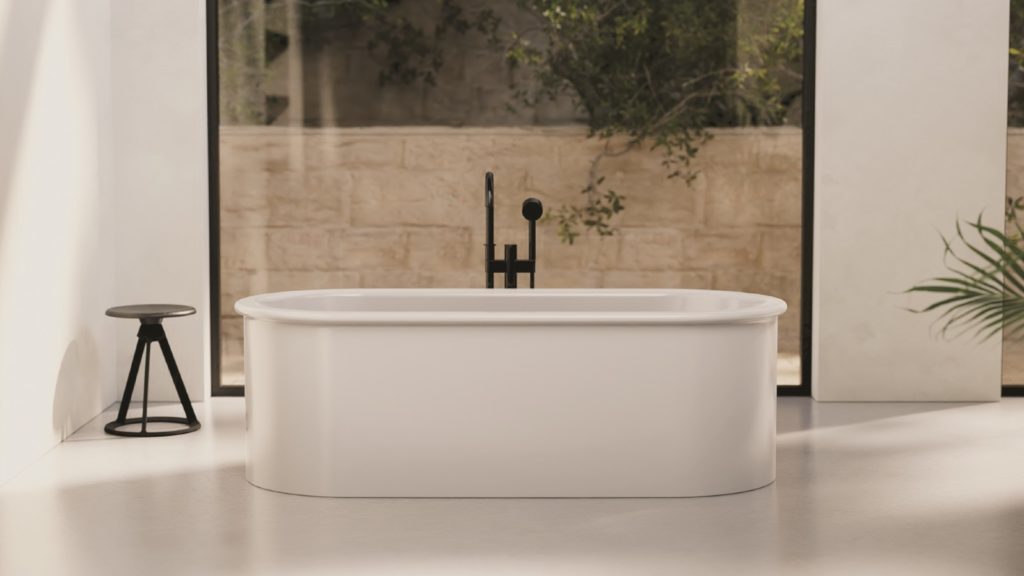
Created by British design duo Barber Osgerby for Bette, the BetteSuno collection includes basins and freestanding bath.
It’s difficult to contemplate a luxury bathroom without the inclusion of a bathtub. It’s not simply about the aesthetics but the ability to provide bathing rituals, allowing users to relax and rejuvenate.
But what truly constitutes a luxury bath? Is it simply the pricetag? Is it a euphemism for a freestanding tub? Or is a luxury bath solely defined by the experience it offers a bather?
Sponsored Video
Certainly, bathroom designers need to embrace luxury baths as the 2023 UK Houzz & Home Study reports the search term ‘luxury bathrooms’ has grown by 109% and ‘spa bathroom’ by 61%.
Freestanding first
Few designers would argue the freestanding tub has historically been the go-to to create a luxury spa-like bathroom.
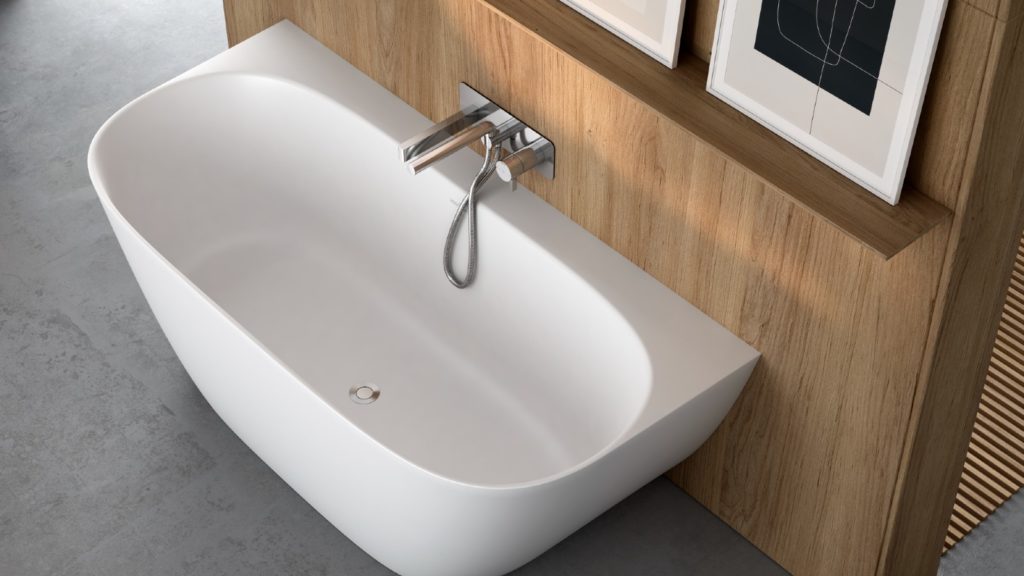
Victoria + Albert Lussari baths come in freestanding, back-to-wall and corner models
Managing director of BC Design Darren Allison states: “There are some great examples within bathroom design of built-in baths delivering on the style stakes, especially when they have been tiled, but that would highlight that it is often the tiles that are adding the luxury element. To be truly luxurious, a freestanding bath is what delivers.”
It would seem to be supported by his company sales, which report 15% year-on-year growth.
In fact, such is the continued popularity of freestanding models, Bette has recently introduced the BetteSuno bath, created by Barber Osgerby, and Victoria + Albert has introduced the Lussari bath in a freestanding model.
However, and interestingly, the Lussari bath range also includes a corner and back-to-wall bath and the Voss bath from Acquabella is also a back-to-wall model with a freestanding look.
So perhaps the freestanding bath, although still significant, is no longer the sole choice when creating a luxury bathroom.
Differing views
“Luxury doesn’t have to mean a freestanding model, although there is something inherently generous and indulgent about a freestanding bath as a bathroom centrepiece”, explains brand manager of House of Rohl Emma Joyce.
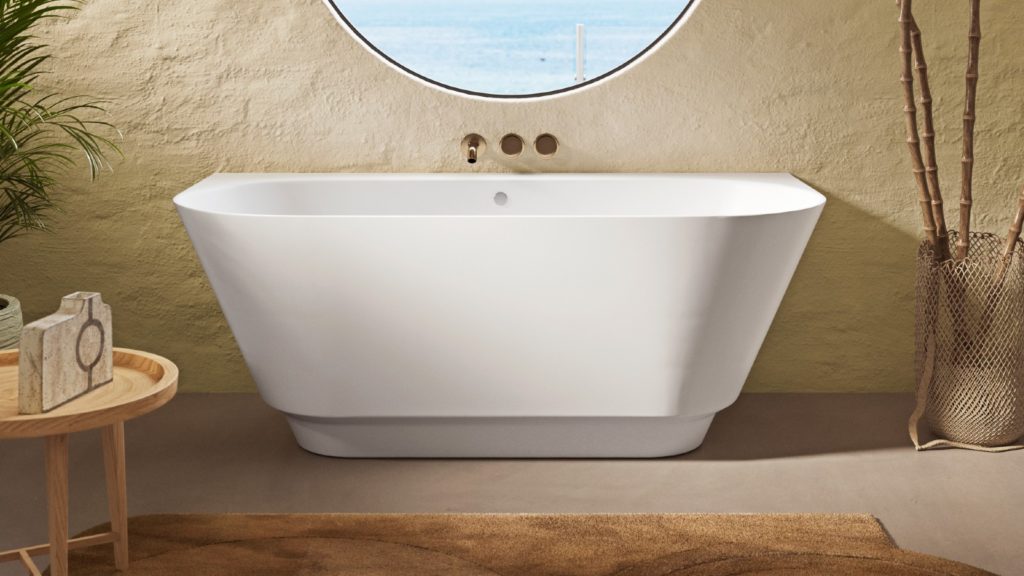
The Acquabella Voss is a semi-freestanding bath with one side set against the wall, suitable for smaller spaces
She adds: “The best luxury baths are design statements, beautifully sculpted yet supremely comfortable for a long soak. Comfort is subjective, and different baths suit different people.”
Her views are echoed by marketing manager of Cabuchon Bathforms Jordan Petts who agrees people have differing views of what constitutes a luxury bath and indeed bathroom space: “In our experience, consumers are moving away from the traditional idea of ‘luxury’ being a freestanding bath placed in the middle of the room as a centrepiece.
“We recognise that different people have different views of what luxury means and, for a lot of them, it means having a bath that suits their own particular lifestyle and needs.
“For many – perhaps the majority of buyers – the bath will often be a component of a broader, luxurious bathroom experience.”
It could see the addition of hydrotherapy through water jets or music through concealed speakers in the tub, or could even the addition of colour.
“With our wide range of colour-cordinated options, a soft grey or warm beige bathtub that matches the washbowl and shower tray, gives the feeling of a luxurious bathroom in a designer five-star hotel”, states head of Kaldewei Sales UK Adam Teal.
Sunken revival
Shaping the bathroom experience has been a recent revival in 1970s interior design and could be the next big thing for luxury bathrooms.
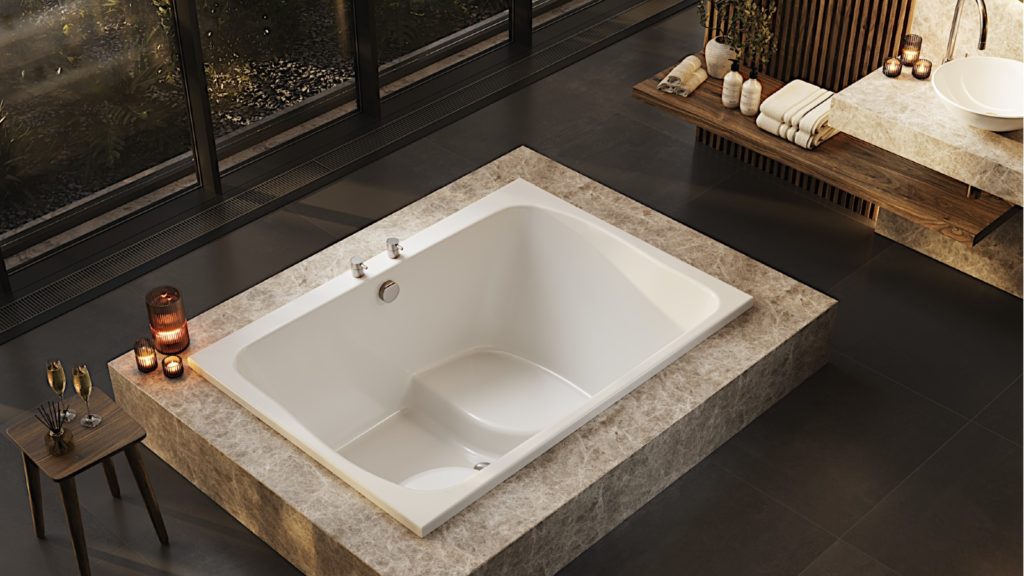
The Futari two-seater soaking tub, from Cabuchon Bathforms, can be installed as a freestanding, corner, peninsular or semi-sunken.
It is supported by the 2023 UK Houzz & Home Study which has revealed online searches for ‘sunken bath’ have more than doubled at 117% increase.
Jordan Petts of Cabuchon Bathforms says this trend is reflected in Cabuchon Bathforms’ sales figures: “We do sell the classic ‘centrepiece’ freestanding baths, but the great majority of our sales [more than 90%] are now soaking tubs.
“That’s because they offer a luxurious experience that suits more people’s homes and lifestyles.”
Compact bathing
But with a growing legislative demand on water efficiency, and typically small British bathrooms, what does that mean for the future of the luxury bath – soaking, freestanding – or otherwise?

Contemporary-style Note bath from Roper Rhodes comes in back-to-wall, corner and fitted options
Jordan Petts states: “Deep soaking tubs generally have a smaller footprint than conventional baths and use considerably less water and use considerably less water…Substituting depth for length, they permit a luxury bathing experience even when space is at a premium.”
There are also luxury tubs available for smaller footprints, from stylish back-to-wall baths based on the look of freestanding models, through to smaller scale versions.
Head of product development at Roper Rhodes Rob Shean comments: “Whether by design or necessity, homes are smaller than ever before, and consumers, designers and retailers are learning to rethink attitudes to modest spaces.
“Available in both traditional and contemporary styles, our 1500mm freestanding baths were designed to meet this growing demand, offering luxury with a more compact footprint.”
He continues: “The same can be said for less conventional and more versatile baths, such as back-to-wall and corner bath options,, that give the appearance of a freestanding tub while maximising on available space.”
Buoyant market
While the market may have toughened following the pandemic, with cost-of-living crisis in full affect, manufacturers point out a luxury bath is an investment and adds value to a property.
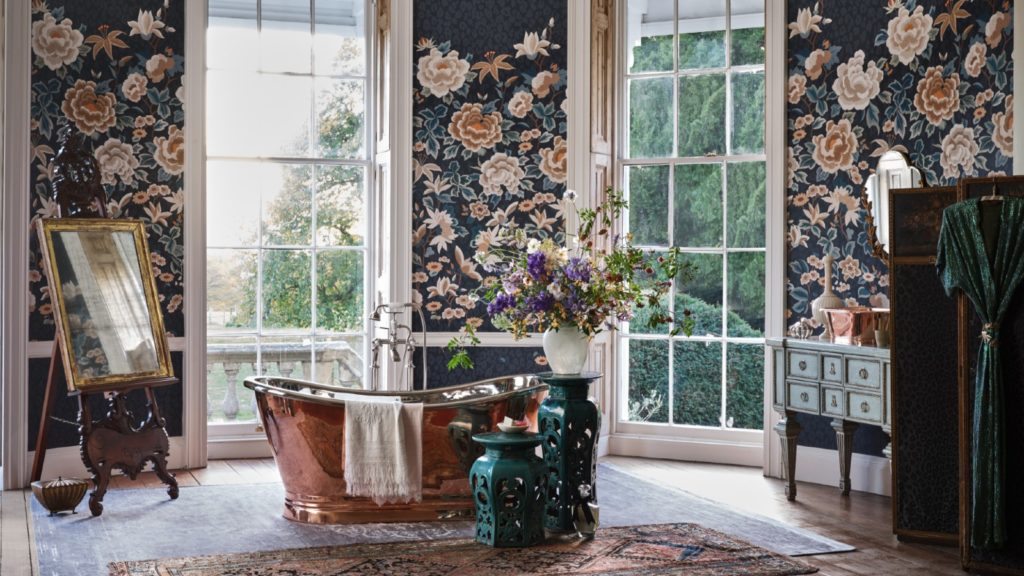
Adding to BC Designs‘ bath offer is this Copper Nickel bath to exude traditional elegance
Darren Allison states: “We know there is a mortgage and interest rate crisis happening right now and so, for those are locking into a lower interest rate, we’ll see these individuals look to renovate rather than move.
“Adding in a freestanding bath has been shown to increase saleability and value of a home and so we expect more people to invest in one when it comes to bathroom renovations.”
So take a look at the market for baths, particularly those with luxury appeal, as they could be highly profitable for future bathroom projects.



